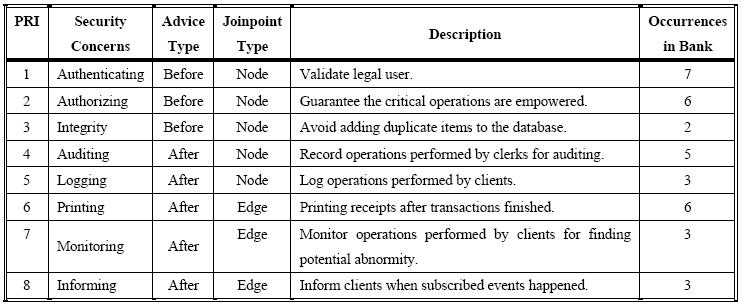A case study of modeling and integrating crosscutting concerns is carried out on design models of a bank system which adapted from ATM example . The design models consists of 8 activity diagrams described the primary functional features. The 8 primary functional activity diagrams describe 5 scenarios (“login”, “logout”, “add account”, “delete account”, “update account”) performed by clerks of the bank and 3 scenarios (“withdraw”, “transfer”, “deposit”) performed by the clients of the bank. With inspecting of those functional scenarios we distilled 8 aspect modelss which crosscutting across the primary features and construct a pair of pointcut and advice models for each of the 8 crosscutting concerns. Table 1 lists the priority, the name, advice type, occurrence count, and description the 8 crosscutting concerns. The relationship between the aspect and the primary models are summarized in Table. 2, and the change of elements number in the primary models are in Fig. 1. ( The details of primary models, aspect models and integrated models could be found the appendixes of user manual)
It can be found from the summary of elements number in Fig. 1 that elements relate to crosscutting concerns account for a large proportion. As a result, separate crosscutting concerns from primary features can reduce the complexity of primary models. Furthermore, it’s obvious in Table.2 that the 8 pairs of templatized aspect models reused 35 times pervading the 8 primary models. This results indicate the feasibilityof reusing aspect models through this aspect-oriented modeling and integrating approach.
Table 1. Crosscutting concerns in the bank system

Table 2. Matrix of crosscutting concerns crosscut primary models of the bank system


Fig.1 Summary of elements number in the primary and integareted models of the bank system